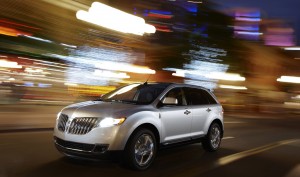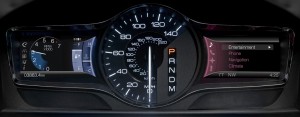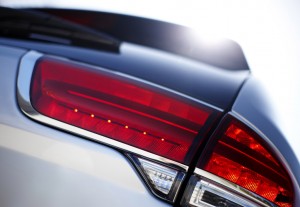Ford has gone on record to say that it knows its Lincoln brand needs to step up its game. So what’s wrong? This MKX crossover offers a good chance to examine some of the issues.
The MKX is the Lincoln version of the Ford Edge. Both vehicles were freshened for 2011 with mildly updated styling and small revisions to everything from the engine to the aerodynamic aids. But the biggest change was the addition of MyLincolnTouch, a new graphic user interface that works with Ford’s groundbreaking Sync voice control system.
The MKX’s relationship to the Ford version is evident immediately. While some Lincolns, such as the MKZ and MKT, get unique shapes compared to their Ford counterparts, the MKX and Edge differ mostly in front and rear-end treatments. Other automakers – such as Toyota which builds its Highlander and Lexus RX350 on same platform, for example – do a better job differentiating their luxury vehicles from the garden-variety ones.
Lincoln has at least established a good start on the styling front. The split-wing grille design is unique, yet it also looks back on Lincoln history.
But beyond the special grille, Lincoln’s styling isn’t expressive or cohesive enough. The MKX literally looks like an Edge with the fancy grille and some extra bright work throughout the rest of the vehicle.
The basic design of the interior is also similar. Again, there’s more bright work and the design of the center stack is rich and more
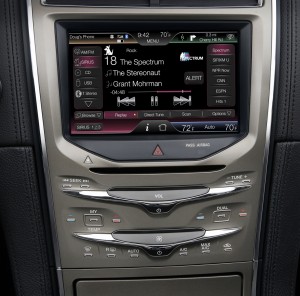
The MKX's center stack has raised touch-sensitive buttons that work better than the completely smooth stack in the Ford Edge.
luxurious compared to the Edge’s tech design.
Under their hoods, Lincoln’s entire lineup mirrors the Ford offerings.
“So what’s the big deal?” you ask. To get luxury buyers to part with more of their money, they expect uniqueness. They don’t want to see cars that look similar to theirs on every street corner. They don’t want to explain to their friends why they paid $10,000 more for a car that is also available from the local Ford store.
All of this is not to say that the MKX is without its merits. It’s as comfortable as a leather Stickley sofa, MyLincolnTouch isn’t near as bad as some critics claim and Ford has relentlessly gone after powertrain improvements resulting in increased power and improved fuel economy.
Click here to read our review of the Edge, including an in-depth look at MyFordTouch, the Ford version of the system in the Lincoln.
The only difference regarding the system is the Lincoln trades the Ford’s sleek piano black center stack and its virtual buttons for a slightly more traditional setup. But only slightly.
While maintaining the minimalist arrangement of buttons as on the Edge, the MKX version has a shapely bronze-colored center stack with touch-sensitive buttons. It’s better than the setup in
the Edge because you can at least feel for the button with less attention paid to the center stack. The center stack in the Edge version is completely smooth.
Still, the buttons need to offer more feedback than a barely audible beep. Many smartphones offer “haptic feedback,” a slight vibration when a button is selected. Such feedback would make MyLincolnTouch more user friendly.
The idea is that MLT is supposed to help drivers keep their attention on the wheel, but instead it requires too much concentration. And there lies the rub with the system. While Ford says it is committed reducing distracted driving, there’s still too much brainpower required to make it work.
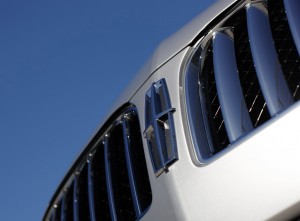
Lincoln's split-wing grille is a good starting point for the brand's styling, but it needs more to differentiate it from Ford.
Ford is stretching the envelope with these new infotainment control systems. While it may not work perfectly now, Ford has set up the system so it can be upgraded with the latest software, and not just for new cars. Ford can update the system in cars already on the road with a simple memory flash.
There are no surprises or complaints about the way the MKX drives. With the 305-horsepower version of the corporate 3.7-liter V-6 lifted from the Edge Sport, it has plenty of power. We averaged 21 mpg on mostly rural two-lanes. A six-speed automatic transmission with manumatic shift buttons is the only offering.
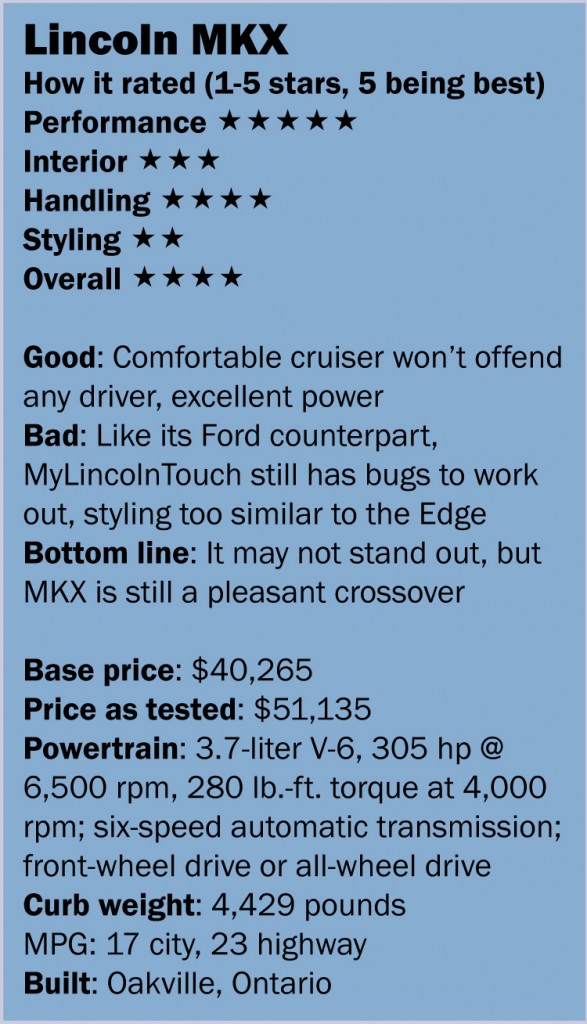 No one would call it a sporty drive, but it’s very smooth. While many luxury car brands have made a good business out of selling cars with sporty driving dynamics, many buyers also like smooth.
No one would call it a sporty drive, but it’s very smooth. While many luxury car brands have made a good business out of selling cars with sporty driving dynamics, many buyers also like smooth.
The seats are comfortable, front and back. Rear-seat passengers in this two-row crossover have sufficient legroom, although space to wiggle toes under the front seats is limited.
One quality note: The test vehicle’s driver’s side window trim did not line up between the front and rear doors.
The MKX carries a base price of $40,265, including destination, for a front-driver. All-wheel drive adds $1,850. A $7,500 option package adds ambient lighting, rear-view camera, adaptive HID headlamps, voice-activated navigation, panoramic sunroof, blindspot monitoring system, upgraded stereo and 20-inch chrome wheels. Add $495 worth of candy red paint and a $1,295 adaptive cruise system, brings the as-tested price to $51,135.
Few would call the MKX great. Ford has said it will address many of the above-stated concerns, promising unique styling, Lincoln-specific powertrains and upgraded interiors. Like most automakers, the luxury brand will still borrow platforms from the parent company, but Ford’s already shown itself to be a master at building multiple cars off the same platform, for example the Ford Taurus and Flex and Lincoln MKS and MKT.
Ford will surely take a page from Cadillac, which has developed a cohesive and unique style for all of its vehicles and made good use of its corporate powertrain parts bin.
Until it does give its buyers some unique offerings, MKX sales will continue to be somewhat lackluster.

